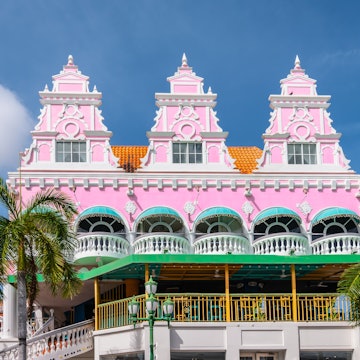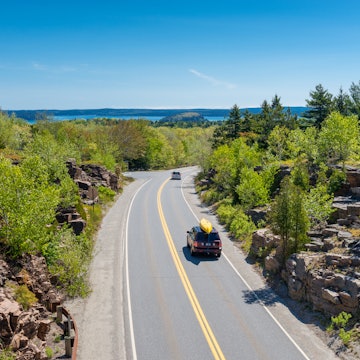
Pride 2025: 6 historic LGBTIQ+ destinations to visit in the US


Outside the Keith Haring Community Wing of The Center in New York. The Center was the birthplace of several influential national LGBTIQ+ groups. Tamara Fleming Photography/courtesy of The Center
The Pride month of June offers a wonderful opportunity to consider the proud if often difficult history of the LGBTIQ+ community. But where do you start?
Many sites, such as New York City’s Stonewall Inn, are widely known for their significance to queer history. Yet there are many other places across the country that have also contributed to this important story.
For fresh insights into the queer liberation’s seminal figures, events and venues, you won’t want to miss these six sites that made a difference to LGBTIQ+ life in the USA – and the world.

1. Julius’, New York City
Enjoy a burger and a beer – and feel the LGBTIQ+ history. This marvelous bar in the West Village has been welcoming tipplers continuously since 1864. By the 1960s, it had become a gathering spot for gay men – who had to be discreet, since any hint of the presence of “disorderly” homosexuals might have risked revocation of the bar’s license. A group of bold, forward-thinking, proudly out (and thirsty) activists – all members of the Mattachine Society – decided to challenge this status quo on April 21, 1966, when they staged a “sip-in” at the bar, daring the bar’s management and the authorities to question their right to a round or two with friends. The result? Business as usual; Julius’ faced no consequences, and the institution of the gay bar slowly began evolving from house of ill repute to neighborhood staple.

2. Leather Archives & Museum, Chicago
In 1991, Chuck Renslow, an openly gay businessman known for pioneering homoerotic photography in the mid-20th century, opened the Leather Archives and Museum in Chicago to preserve a subculture of queer life.
Through temporary exhibitions, visitors can consider how and why the leather, kink, fetish and BDSM scenes blossomed in the queer community. The museum also holds the archives of Mineshaft, a historic, members-only BDSM gay leather bar and sex club that drew gay men to the (then) grungy streets of Manhattan’s Meatpacking District.

3. The Lesbian, Gay, Bisexual & Transgender Community Center, New York City
This handsome former schoolhouse became a site of urgent activism during the AIDS crisis, when the community gathered to agitate for a governmental response to a disease that at that time disproportionately affected gay men. The activists of ACT UP officially joined forces here; The Center was also the birthplace of such influential groups as the Lesbian Avengers and Gay & Lesbian Alliance Against Defamation (GLAAD).
It remains a beautifully maintained community gathering place where anyone can drop in, whether for a coffee, a youth-oriented program, career counseling, a 12-step meeting or art exhibition. Don’t miss the sensational if rather graphic mural in the second-floor bathroom by LGBTIQ+ icon Keith Haring.
How to save bucks in the Big Apple: NYC on a budget
4. Most Holy Redeemer Catholic Church, San Francisco
During the HIV/AIDS crisis, this San Francisco parish opened its arms to LGBTIQ+ people, offering weekly support groups and sermons throughout the 1980s that embraced the community with love. Today, the church is a regularly visited historical site and remains a popular place of worship for those looking for inclusion.

5. Jacob Riis Park, New York City
Jacob Riis Park – better known as Riis Beach or just Riis – has drawn queer sun lovers since the 1940s. Located on the oceanfront Rockaway Peninsula in Queens, Riis has for decades been where gay people from New York City went to sunbathe nude, as they were often excluded from other more central or crowded bathing areas. Today, this area of the beach maintains its queer identity as one of NYC’s popular and diverse LGBTIQ+ public spaces. It’s particularly popular during the summers and over Pride weekend.

6. GLBT History Museum, San Francisco
San Francisco’s “queer Smithsonian,” the GLBT History Museum maintains an extensive archival collection of materials relating to queer history in the US, with a focus on the LGBTIQ+ communities of San Francisco and Northern California. In the historic “gayborhood” of the Castro, the objects and displays here showcase the extensive history of LGBTIQ+ life in the city since the 1850s.















